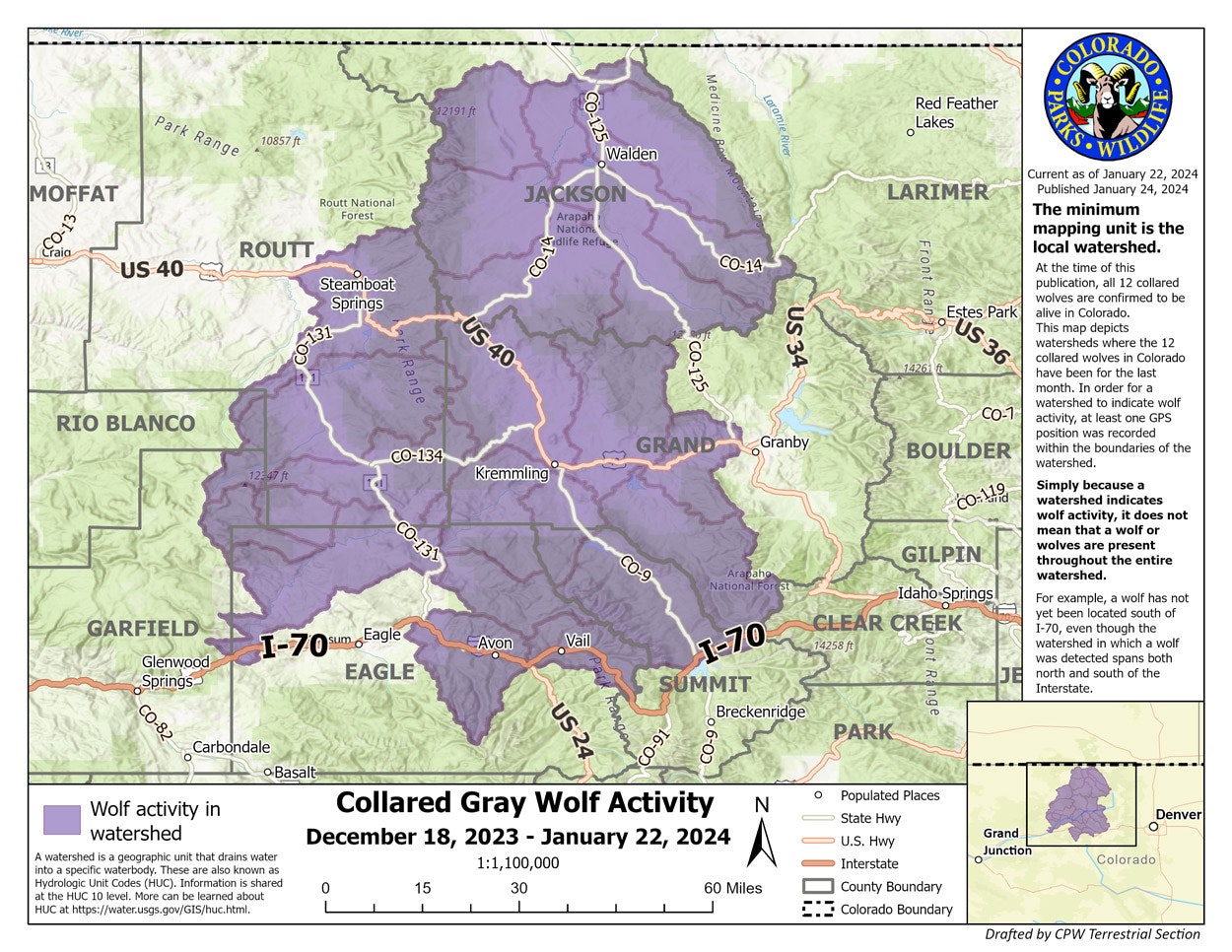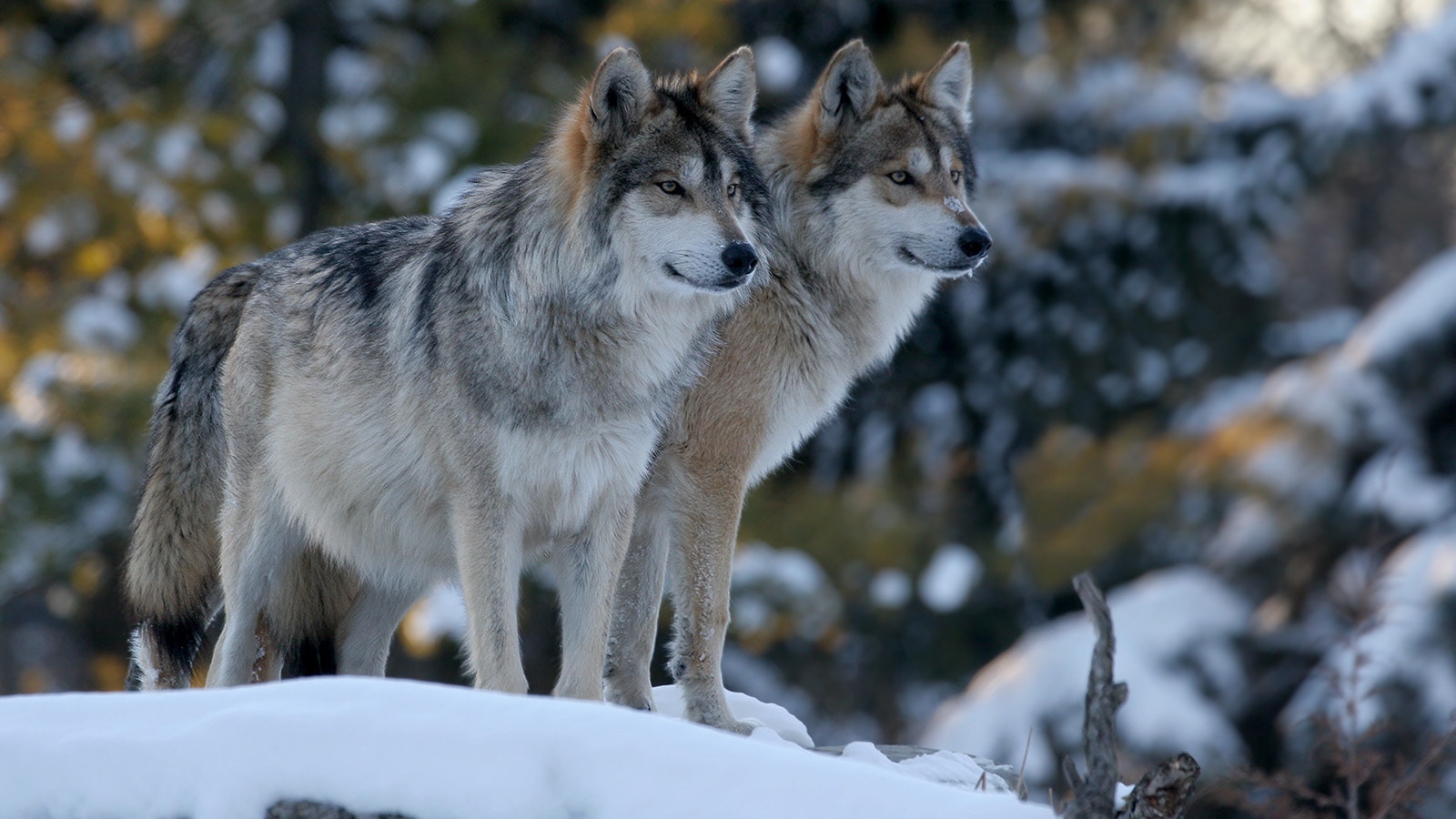After about only a month in Colorado, wolves have wandered far and wide, including coming close to the Wyoming state line north of Walden, Colorado.
But that shouldn’t come as a surprise, a Meeker, Colorado, rancher told Cowboy State Daily.
“Wolves can travel 50 miles a day, (so) that doesn’t surprise me at all,” Howard Cooper said.
Cooper opposes Colorado’s wolf reintroduction and is backing a coalition that’s suing to put a hold on any further wolf releases.
Meanwhile, the Colorado Parks and Wildlife Department (CPW) also isn’t surprised by the distances the wolves have covered in the weeks since they were released in the northcentral part of the state.
The Centennial State’s wolf reintroduction is unfolding as planned, CPW spokesman Joey Livingston told Cowboy State Daily.
“The goal of the Colorado Wolf Restoration and Management Plan is to create a viable and self-sustaining wolf population in Colorado. The distance the wolves have moved so far is consistent with what was anticipated in the plan,” he said.
A Colorado range scientists also recently told Cowboy State Daily that the wolf reintroduction program can work, relying mostly on nonlethal methods of protecting cattle.

Crossing Wyoming Line Could Mean Death
Wolves skirting the Wyoming line could have grave implications for Colorado’s reintroduction program. Wolves in Colorado remain under federal endangered species protection and can’t be hunted or killed by the general public.
In stark contrast, the areas of Wyoming along the state line are part of the Cowboy State’s “predator zone” for wolves. That means they can be shot at any time. That means if any of the 10 wolves released in December range too far north, they’re in danger of being killed.
Cooper said he favors Wyoming’s policy in that regard, and some Wyoming ranchers recently said they’re prepared to shoot wolves on sight if they cross the state line.
However, CPW is confident that its “buffer zone” policy regarding wolf release sites will prevent any major setbacks.
“Scientists found that wolves released in Yellowstone and central Idaho in the mid-1990s moved substantial distances in the months immediately after release,” Livingston said. “Average distance was approximately 50 miles ranging from approximately 22 to 140 miles from the release sites.
“Because of this, releases in Colorado occurred a minimum of 60 miles from the northern border with Wyoming, the western border with Utah, the southern border of New Mexico, as well as a similar buffer, as requested by the tribes, of sovereign tribal lands in southwestern Colorado.”
Washington Could Provide More Wolves
Colorado’s wolf reintroduction program was initiated by Proposition 114, which Colorado voters passed in 2020 by the slimmest of margins, 50.91% to 49.09%.
Although Wyoming, Montana and Idaho refused to provide any wolves to Colorado, Oregon eventually agreed to provide the first 10 wolves.
In December, Colorado Parks and Wildlife agents released 10 wolves at undisclosed remote locations in Grand and Summit counties in northern Colorado.
Some hailed that as a resounding success. But others objected, pointing out that, among other things, some of the wolves came from Oregon packs with histories of attacking cattle.
The next planned step is to release 15 more wolves in Colorado between December 2024 and March 2025. The Confederated Tribes of the Colville Reservation in Washington state have agreed to provide those wolves.
Suing To Stop More Wolf Releases
However, the Colorado Conservation Alliance (CCA) is suing to have further wolf releases halted. The CCA is a coalition of ranchers, hunters, outfitters, business owners and others.
Cooper’s business interests include ranching, outfitting and energy, and he’s one of the CCA’s financial backers.
Among the CCA’s claims is that officials and agencies involved with the wolf reintroductions broke their own rules by bringing in wolves with histories of livestock depredation.
There’s also concern that the wolves could bring in new parasites and diseases, such as tapeworms, into Colorado’s ecosystems, Cooper said, adding that the effects of the wolves on the economy and the interests of the Southern Ute Tribe weren’t adequately addressed either.
And there’s also the risk that the reintroduced gray wolves could pose to the 241 remaining Mexican wolves in New Mexico and Arizona, which could start filtering into Colorado, he said.
A similar lawsuit brought by Colorado cattlemen failed in Denver courts, so the CCA wants its case moved to courts in Grand Junction, Colorado, Cooper said.
There’s also objection to a “watered-down 10(j) ruling” which puts the Colorado wolves under federal protection and doesn’t allow for adequate control of the predators, he said.
Boebert Sounds Off
Similarly, Colorado Republican Congresswoman Rep. Lauren Boebert has lashed out at wolves getting federal protection in Colorado, or any other state, and vowed to push back against it.
“Gray wolves are thriving and are fully recovered. It's absurd that this species still enjoys taxpayer funded protections under the Endangered Species Act,” Boebert said in statement Monday.
“How many more ranchers and farmers must endure losses because the Biden regime refuses to comply with the law and delist a species that has unnecessarily lingered on the ESA list for nearly 50 years?” she added.
Mark Heinz can be reached at mark@cowboystatedaily.com.





